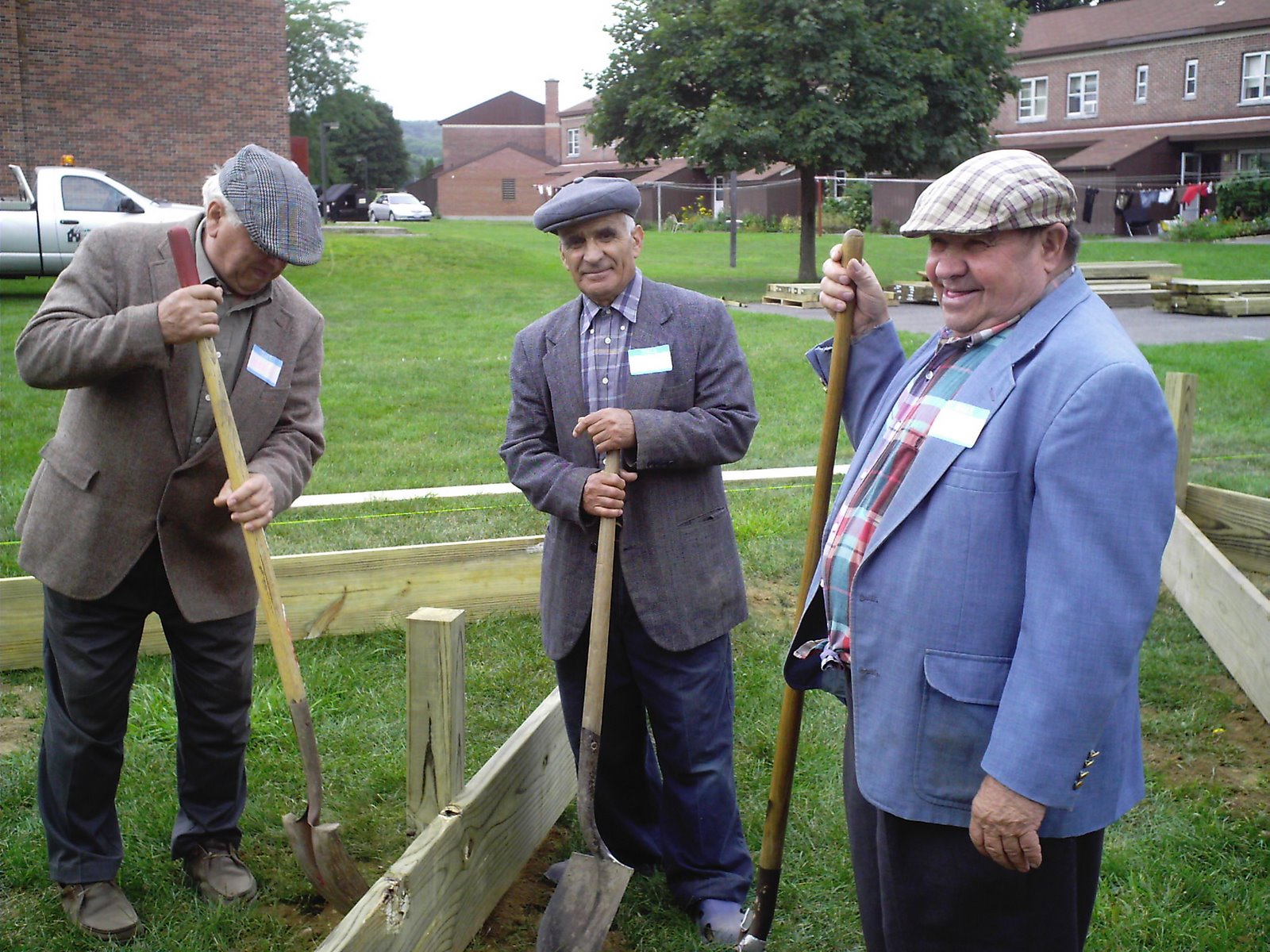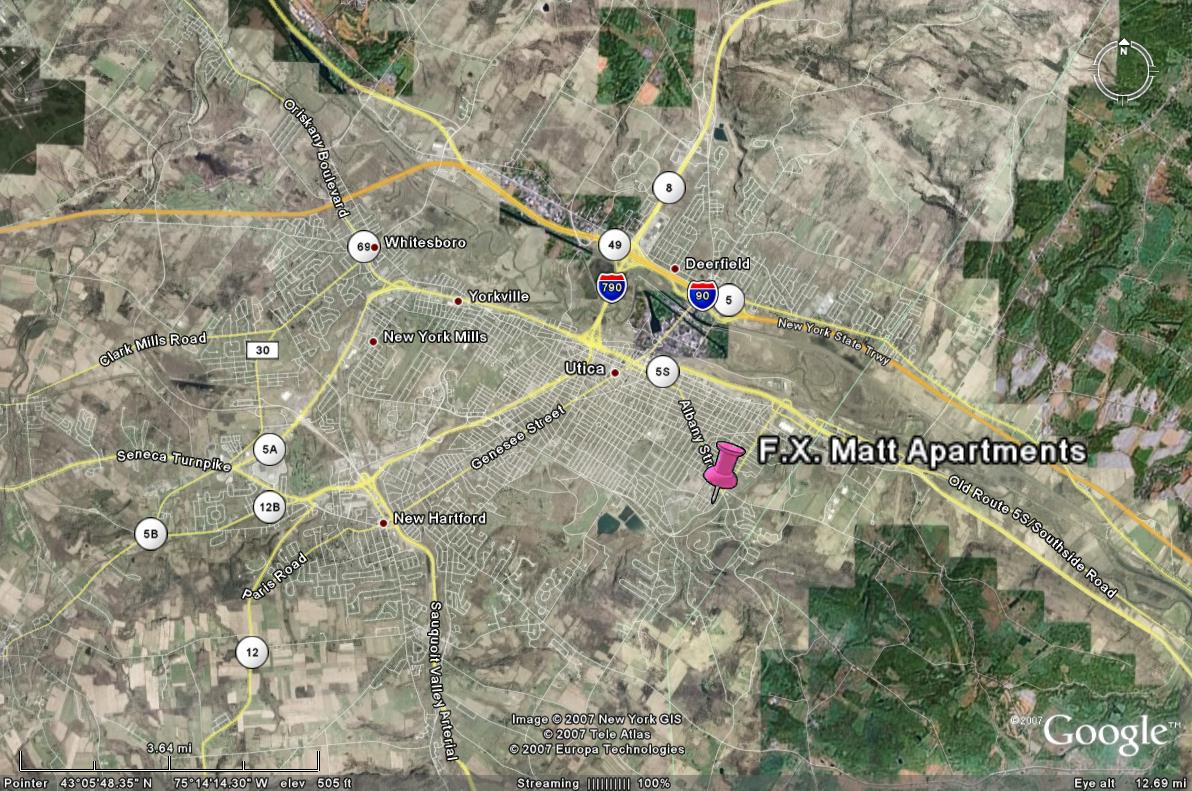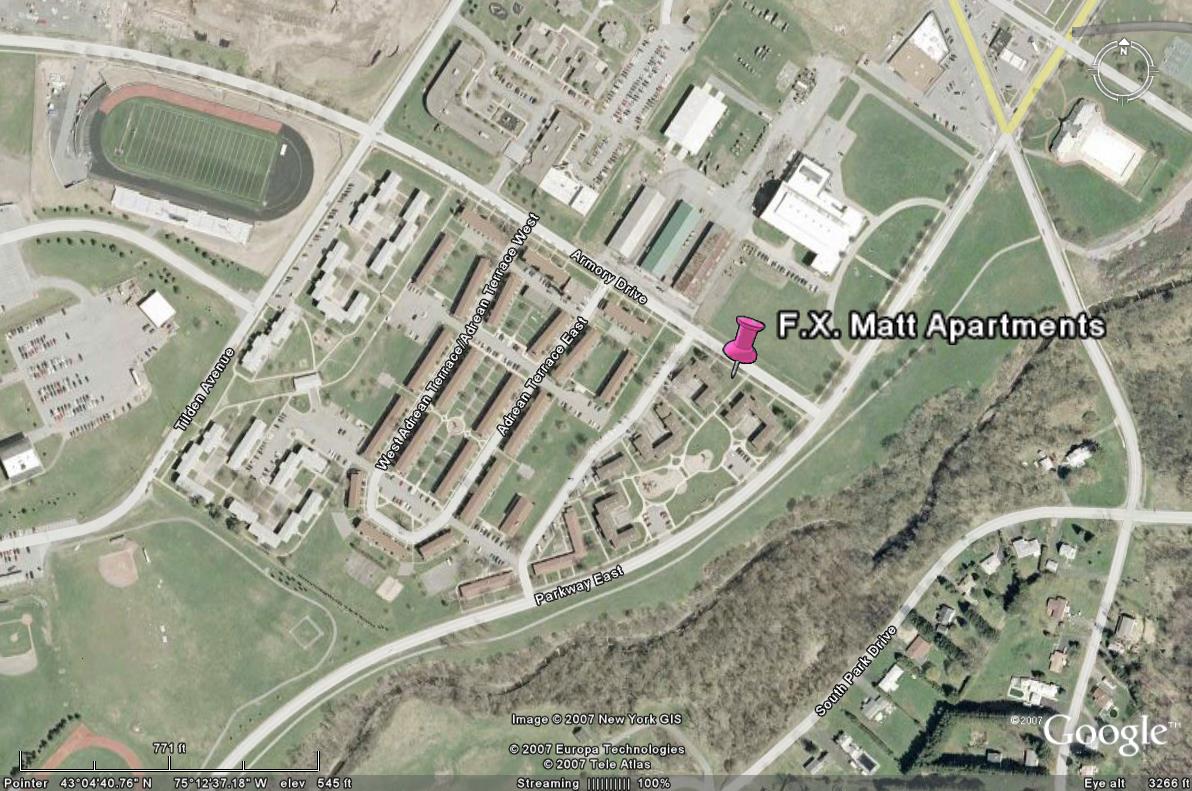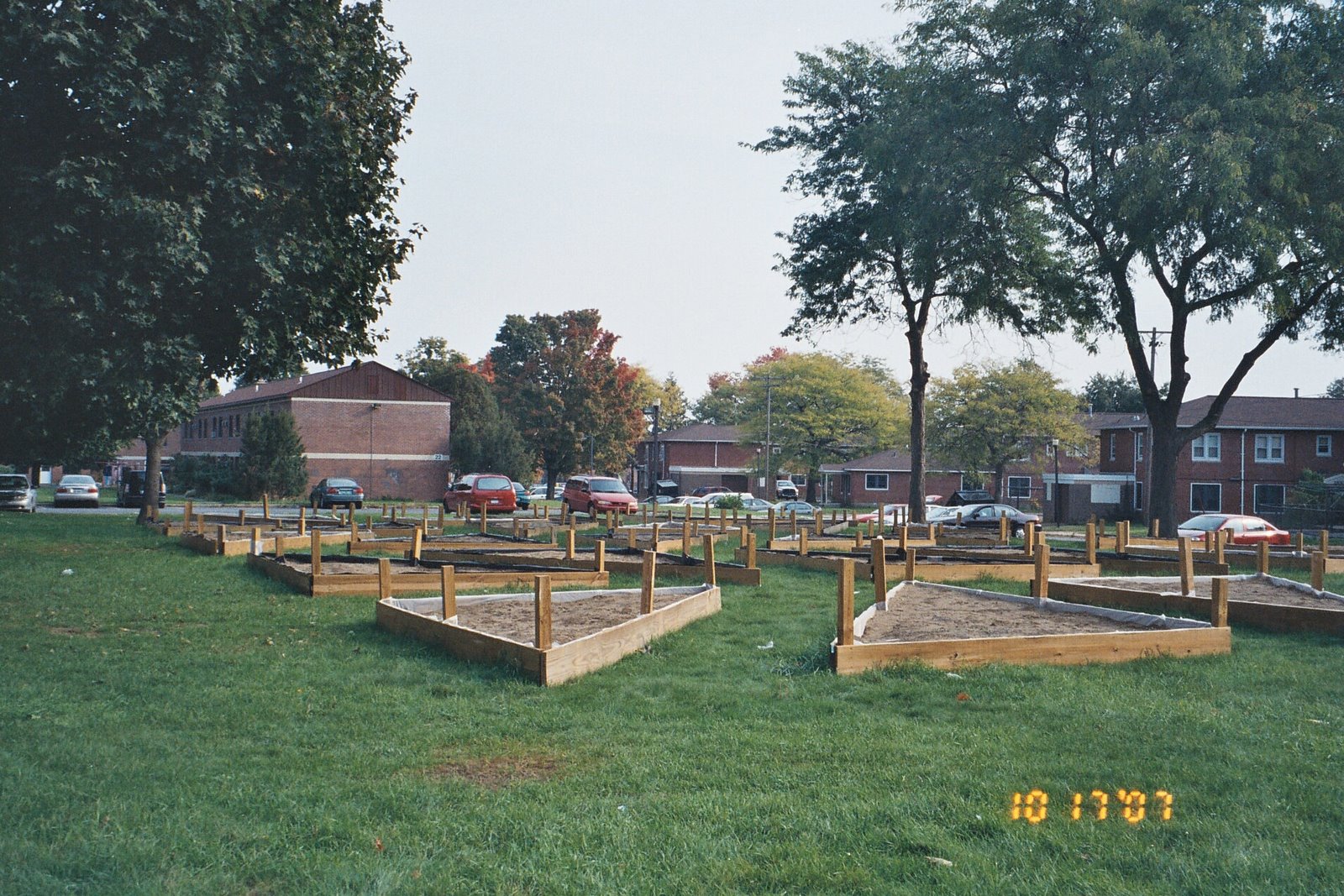Case Study 2: Utica Community Garden Project
 |
Photo courtesy of the community garden project organizer, Jenney Stringer |
Introduction
When Patty Haller, the director of the Boise Community Garden Project, spoke at panel discussion at Hamilton College in Utica, New York, an undergraduate student in the audience, Jenney Stringer was stirred to action. An active volunteer in Utica’s refugee center who spent a summer in Thailand working with Laotian and Khmer gardeners in Isan, Stringer drew upon private and non-profit resources to create a community garden for residents in an East Utica public housing complex. In just a few months, she was able to pull together the funding, resources, manpower, and infrastructure to create garden plots for 34 families.
Utica, like Boise, is celebrated by international and national resettlement agencies as a “soft landing spot.” The housing is indeed affordable, and the receiving community has demonstrated its tolerance for ethnic diversity. In fact, a 2005 magazine published by the United Nations High Commissioner for Refugees (UNHCR) named Utica “The Town that Loved Refugees.”<1> Diversity is actually part of the town’s heritage. Typical of milltowns that flourished in the late 1800s and early 1900s, Utica was once a bustling manufacturing city that employed a diverse mass of European immigrants in textile and tool-making industries. At its peak, the city was home to 120,000 Germans, Italians, Poles, and Arabs.<2> After the industries left the northeast, Utica suffered an economic aftershock along with the rest of the rustbelt. Population just recently stabilized at around 65,000.<3>
In the past twenty-five years, the Mohawk Valley Resource Center for Refugees (MVRC) has resettled over 10,000 refugees in the Utica. Assistant Secretary of State Arthur E. Dewey visited the city in 2003 praising refugees for their contribution toward the city’s urban renewal. Refugees renovated dilapidated housing stock and opened businesses in neighborhoods that had long been on the decline.
“The town had been hemorrhaging for years. The arrival of so many refugees has put a tourniquet around that hemorrhaging. They have saved entire neighborhoods which were ready for the wrecking ball. As a city, we can’t put a price on this.”
—Mayor Tim Julian <4>
Yet not all of the refugees are prospering as advertised. Many remain isolated, opting out of English classes and citizenship training. Jenney Stringer hoped the community garden project would help alleviate some of the difficulty refugees have connecting to across cultures and to their receiving town. Stringer and I talked on the telephone about her project. Since the gardens were constructed in August and November of this year (2007), I cannot comment on its outcomes, so here I briefly summarize how the project came together.
Project Overview
The Utica refugee community garden supports 34 families from Bosnia, Russia, the Ukraine, Belarus, and Somalia. In just one day, over a hundred volunteers erected raised beds in the commons area of the F. X. Matt low-income housing complex. All materials, tools, and infrastructure were donated. There is already a waiting list to get a plot.
Project |
Initiated By |
Serves |
Primary Goal |
Delivered Benefits |
Utica Refugee Community Gardens |
College Student |
Refugees in a specific housing complex |
Food security |
Community Building |
 |
| Map of Utica from Google |
 |
| Aerial of context from Google |
Making it Happen
After her junior year at Hamilton College, Jenney Stringer approached the Municipal Housing Authority and asked if they would support her creating a community garden at the F.X. Matt complex. Though at first reluctant, since the government had recently cut their maintenance budget in half, they allowed her to proceed. She secured a $5,000 grant from the Community Foundation and an Arthur Levitt Center Community Service Fellowship, along with $200 from Wal-Mart and tools from the Home Depot.<5>
With the funding, infrastructure, and tools in place, Stringer then connected with F.X. Matt residents. A Russian woman, locally known as the “mayor of the apartments” emerged as the resident garden champion and assisted with the first round of outreach. Though all residents were invited to participate, most of the gardeners ended up being from Eastern Europe or Russia. In order to diversify the participant group, Stringer did some targeted outreach to other ethnic groups and was successful in recruiting three Somali families.<6>
In August, Hamilton students, F.X. Matt residents, Utica residents, and Team-Depot volunteers worked collectively to build the beds and fill them with dirt. The gardens will be ready for planting next spring. This is well-timed since the Housing Authority will be forcing residents to remove small personal gardens they planted by their apartment entries. Hopefully the community garden plots will act as appropriate replacements.
Outlook for the future
The F.X. Matt project, like the Boise project, was initiated by a benevolent outsider. However it is different in that it has the potential to be self-sustaining. There are three main resident organizers that are going to act as garden managers. Plus, the fact that the plots are within the housing complex means that they will be physically integrated into the gardener’s domestic life. For these reasons Stringer is confident that so long as the Municipality is cooperative, the community garden will endure.
 |
Photo courtesy of the community garden project organizer, Jenney Stringer |
=====
<1> Ray Wilkinson, “The Town the Loves Refugees,” Refugees 138 (2005): 4-31. http://www.unhcr.org/publ/PUBL/426f4c772.pdf (accessed October 12, 2007)
<2> Ibid, 7
<3> Ibid, 8
<4> ibid, 9
<5> Jenney Stringer, Interview by author, Cambridge, MA, October 26, 2007.
<6> Ibid